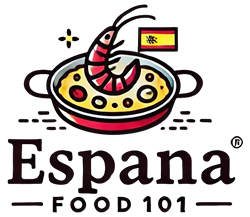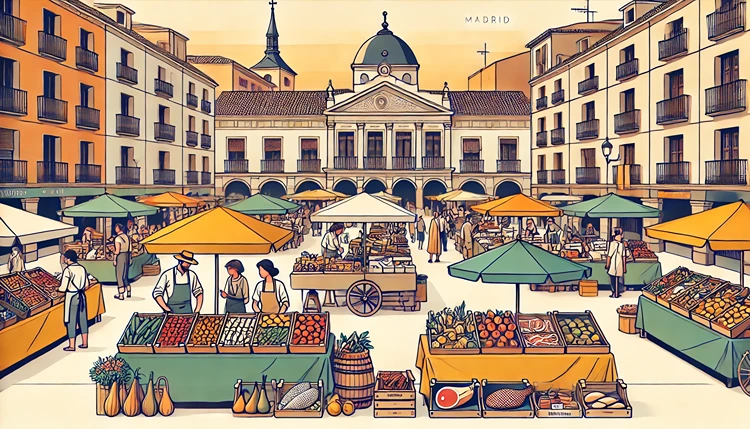Madrid is a paradise for food lovers. If you’re looking to cook authentic Spanish dishes, it’s essential to know where to source the freshest ingredients. The best way to immerse yourself in Spain’s culinary traditions is by visiting the city’s bustling food markets. These markets are not only a hub for locals but also a treasure trove of regional ingredients, from fresh seafood to unique spices, perfect for creating unforgettable meals.
In this article, we’ll explore the best food markets in Madrid for authentic Spanish ingredients, giving you an insider’s look at where to find the best produce, meats, and pantry staples.
What Makes Madrid’s Food Markets So Special?
Madrid’s food markets are not just places to buy groceries—they are cultural landmarks that tell the story of Spain’s food heritage. Many of these markets have been around for over a century, offering a wide range of products that represent the diversity of Spain’s regional cuisines.
Whether you’re seeking seasonal fruits, artisanal cheeses, or the perfect cut of Iberian ham, Madrid’s markets provide everything you need to recreate traditional Spanish recipes with authenticity and flair.
Why Visit a Food Market Instead of a Supermarket?
Unlike supermarkets, food markets offer products that are fresher, more seasonal, and often sourced directly from local producers. Visiting these markets allows you to support small businesses and enjoy food that is bursting with flavor, free from unnecessary preservatives.
Helpful Hint:
Shopping at food markets also allows you to engage with local vendors, many of whom have in-depth knowledge about their products. They can offer tips on how to prepare and cook ingredients for the best results.
Top Markets in Madrid for Authentic Spanish Ingredients
When it comes to finding the best markets in Madrid, it can be overwhelming to choose. Here are the must-visit spots for anyone looking to stock up on high-quality, authentic Spanish ingredients.
Mercado de San Miguel: The Gourmet Experience
Location: Plaza de San Miguel, near Plaza Mayor
Mercado de San Miguel is arguably the most famous market in Madrid. Although it leans more toward the touristy side, it’s a great place to get a taste of Spain’s culinary delights in one spot. You’ll find everything from fresh seafood to local olive oils, and it’s also a great spot to enjoy tapas while you shop.
- Artisanal cheeses from different regions of Spain
- Fresh seafood and shellfish
- Iberian ham and charcuterie
If you’re after hard-to-find Spanish ingredients like saffron, chorizo, or manchego cheese, Mercado de San Miguel is a convenient stop.
Stats:
Did you know? Mercado de San Miguel attracts over 10 million visitors annually, making it one of the busiest food markets in Madrid.
Mercado de la Paz
Location: Calle de Ayala, Salamanca district
If you want to escape the crowds and explore a market favored by locals, head to Mercado de la Paz. This market has been around since 1882 and offers a traditional shopping experience with a wide variety of stalls selling fresh, local produce. It’s the perfect place to find high-quality meat, fresh fruits, and an assortment of Spanish delicacies.
- Fresh fruit and vegetables from local farms
- Handcrafted olive oils and vinegars
- Artisanal bread and pastries
Mercado de la Paz is especially known for its fresh meats and fish, making it a go-to destination for locals preparing Sunday roasts or family gatherings.
Mercado de Antón Martín
Location: Calle de Santa Isabel, Lavapiés district
This vibrant market offers a combination of traditional Spanish ingredients and innovative food stalls. It’s the ideal spot for those who want to experiment with traditional flavors in modern recipes. Mercado de Antón Martín has an eclectic mix of vendors, offering everything from organic produce to exotic spices, along with various eateries where you can sample dishes as you shop.
Here, you can find:
- Organic fruits and vegetables
- Exotic spices from around the world
- Spanish wines and craft beers
If you’re looking for variety and inspiration, Mercado de Antón Martín provides a fresh take on Spain’s culinary traditions, blending the old with the new.
Popular Ingredients Found in Madrid’s Markets and Their Culinary Uses
| Ingredient | Traditional Spanish Dishes | Best Market to Buy |
|---|---|---|
| Saffron | Paella, Fabada | Mercado de San Miguel |
| Iberian Ham | Tapas, Bocadillo de Jamón | Mercado de la Paz |
| Fresh Seafood | Paella, Calamares | Mercado de Maravillas |
| Manchego Cheese | Queso Manchego con Membrillo, Cheese Platters | Mercado de San Antón |
| Chorizo | Lentejas con Chorizo, Cocido Madrileño | Mercado de Antón Martín |
How to Choose the Best Ingredients for Spanish Dishes
When shopping for authentic Spanish ingredients, freshness is key. Whether you’re buying seafood for a paella or saffron for seasoning, it’s essential to choose products that are high-quality and seasonal.
Here are some tips for selecting the best ingredients at Madrid’s food markets:
- Look for seasonal produce. Spain’s cuisine is highly seasonal, so always ask vendors what’s freshest that day.
- Ask for advice. Vendors are often happy to offer recommendations based on what you’re cooking. Don’t hesitate to ask them for tips on how to prepare certain ingredients.
- Buy small quantities. Spanish cuisine often emphasizes the freshness of ingredients, so buying smaller portions ensures you always use the freshest items in your recipes.
Madrid’s markets are brimming with the ingredients needed to recreate Spain’s most beloved dishes. Knowing where to go and what to look for will help ensure your meals are as authentic as possible, straight from the heart of Spain.
Helpful Hint:
If you’re new to Spanish cooking, start by mastering simple dishes like gazpacho or tortilla Española. Both dishes require only a handful of fresh ingredients, all of which can be found at any of Madrid’s local markets.
Mercado de San Antón
Location: Calle de Augusto Figueroa, Chueca district
Mercado de San Antón is a modern, multi-level food market located in the trendy Chueca neighborhood. It’s an excellent option for those who appreciate a more contemporary vibe, while still being able to shop for traditional Spanish ingredients. The ground floor offers an abundance of fresh produce, meats, and seafood, while the upper floors feature eateries where you can grab a bite to eat or enjoy a drink on the rooftop terrace.
- Fresh seafood and fish
- Organic fruits and vegetables
- Artisanal meats and cheeses
The rooftop is a popular spot for locals and visitors alike, offering a relaxing space to unwind after a shopping trip. Mercado de San Antón perfectly balances tradition and modernity, making it a great stop for those who want to explore authentic Spanish ingredients in a contemporary setting.
Mercado de Maravillas
Location: Calle de Bravo Murillo, Cuatro Caminos district
If you’re serious about cooking and want access to a wide range of fresh, high-quality ingredients, Mercado de Maravillas is a must-visit. It’s one of the largest markets in Madrid, covering over 8,000 square meters, and offers a diverse selection of goods that cater to both everyday cooking needs and special occasions. From fresh seafood to exotic fruits, this market is a paradise for home cooks looking to stock their kitchens with authentic Spanish ingredients.
Here, you’ll find:
- Fresh seafood, including squid, octopus, and shellfish
- Wide variety of fresh herbs and spices
- Local cheeses and cured meats
Mercado de Maravillas is not as well-known as some of the more touristy markets, but it offers incredible value and variety, making it a favorite among locals. It’s particularly famous for its excellent seafood and meat selection, so if you’re planning to cook up a Spanish feast, this market should be at the top of your list.
How to Store and Preserve Fresh Ingredients
Once you’ve stocked up on fresh ingredients from Madrid’s markets, it’s important to store them properly to ensure they stay fresh. Many Spanish dishes rely on the quality of ingredients, so proper storage can make a big difference in the final flavor of your meal.
What to Do with Fresh Seafood
Seafood is a staple in many Spanish dishes, especially in coastal regions. If you’re buying fresh seafood, it’s best to cook it within a day or two. If you need to store it for longer, keep it in the coldest part of your refrigerator or freeze it to preserve its freshness.
Helpful Hint:
When freezing seafood, wrap it tightly in plastic wrap or vacuum-seal it to prevent freezer burn. Be sure to label and date it so you know how long it’s been frozen.
How to Store Fresh Produce
For fruits and vegetables, it’s best to store them in a cool, dry place. Many of the seasonal fruits and vegetables you’ll find at Madrid’s markets can last up to a week when stored properly. Leafy greens, peppers, and tomatoes tend to stay freshest when stored in the refrigerator.
Preserving Spanish Meats and Cheeses
Iberian ham, chorizo, and manchego cheese are some of the most beloved staples of Spanish cuisine. These can be stored for much longer than fresh meats and seafood, but it’s important to keep them in a cool, dry place. Iberian ham, for example, should be wrapped in a cloth and kept at room temperature, while manchego cheese should be wrapped in wax paper and stored in the fridge.
What Can You Cook with Ingredients from Madrid’s Markets?
Once you’ve gathered your ingredients from Madrid’s markets, the culinary possibilities are endless. Here are a few classic Spanish dishes you can easily make using fresh market produce:
Paella: Spain’s Most Famous Dish
Paella is synonymous with Spanish cuisine, and it’s a dish that relies heavily on fresh ingredients. The key to a perfect paella is using fresh seafood, saffron, and bomba rice, all of which can be found in Madrid’s markets.
Stats:
Did you know? Paella originated in Valencia but has since become a national dish. It’s estimated that over 20 million servings of paella are made each year in Spain.
Gazpacho: A Refreshing Summer Dish
Gazpacho is a chilled tomato-based soup that’s perfect for hot summer days. It’s simple to make and only requires a handful of ingredients, most of which can be sourced from Madrid’s markets. Fresh tomatoes, cucumbers, peppers, and olive oil are all you need to whip up this refreshing dish.
Tortilla Española: The Spanish Omelette
This classic Spanish dish requires only a few ingredients but packs a ton of flavor. Fresh eggs, potatoes, and onions are the main components of this simple yet satisfying dish. You can easily find all these ingredients at any of Madrid’s markets.
FAQs
Wrapping Up
Madrid’s food markets offer an unparalleled opportunity to discover and source authentic Spanish ingredients. Whether you’re exploring the historic stalls of Mercado de San Miguel or searching for hidden gems at Mercado de Maravillas, these markets capture the essence of Spain’s culinary traditions. By choosing the freshest, most local produce and pantry staples, you’ll be well on your way to cooking meals that honor Spain’s rich food culture.
As you navigate these vibrant markets, remember that the best way to experience Spain’s flavors is to engage with the local vendors, ask for recommendations, and choose seasonal ingredients. By supporting local markets, you’re not only enriching your own culinary experiences but also contributing to a tradition that has been at the heart of Spanish culture for centuries.
Next time you’re in Madrid, be sure to immerse yourself in its bustling markets for a true taste of Spain, and take home the best of what this gastronomic city has to offer.







